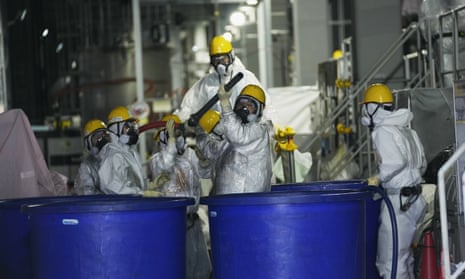Four workers at the Fukushima nuclear plant were splashed with water containing radioactive materials, with two of them taken to hospital as a precaution, according to the plant operator.
The incident, which took place on Wednesday, highlights the dangers Japan still faces in decommissioning the plant. The reactor was knocked out by an immense tsunami in 2011 in the world’s worst atomic disaster since Chornobyl in 1986.
Five workers were cleaning pipes at the system filtering wastewater for release into the sea when two were splashed after a hose came off accidentally, according to a spokesperson for operator Tepco.
Two others were contaminated when they were cleaning up the spill, the spokesperson added.
The radiation levels in the two hospitalised men were at or above 4 becquerels per square centimetre, the threshold which is considered safe.
“We’ve been told the condition of the two workers being hospitalised is stable,” the Tepco spokesperson said.
Tepco said that both would stay in hospital for “about two weeks” for follow-up examinations and that the company was analysing how the accident had occurred while reviewing measures to prevent a repeat of it.
The incident came a few days after Tepco completed releasing a second batch of wastewater from the plant and as United Nations inspectors visited the facility for a safety review.
Tepco began pumping more than 1m tonnes of water into the sea on 24 August, drawing criticism from China and local fishing communities concerned about damage to the reputation of their catch. The water is treated to remove most radioactive substances, but contains tritium, an isotope of hydrogen that cannot be easily separated from water.
Tokyo’s view that the water being released is harmless is backed by the International Atomic Energy Agency.
But China and Russia have criticised the release and banned Japanese seafood imports.
The release of the water, equivalent to 540 Olympic swimming pools, is meant to clear space for the much more hazardous task of removing radioactive fuel and rubble from the three stricken reactors.
